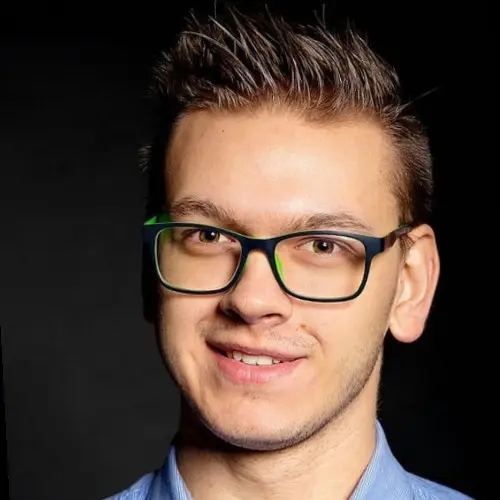How to Create a Zero-Waste Supply Chain With AI-driven Platform and First-to-market IoT Devices
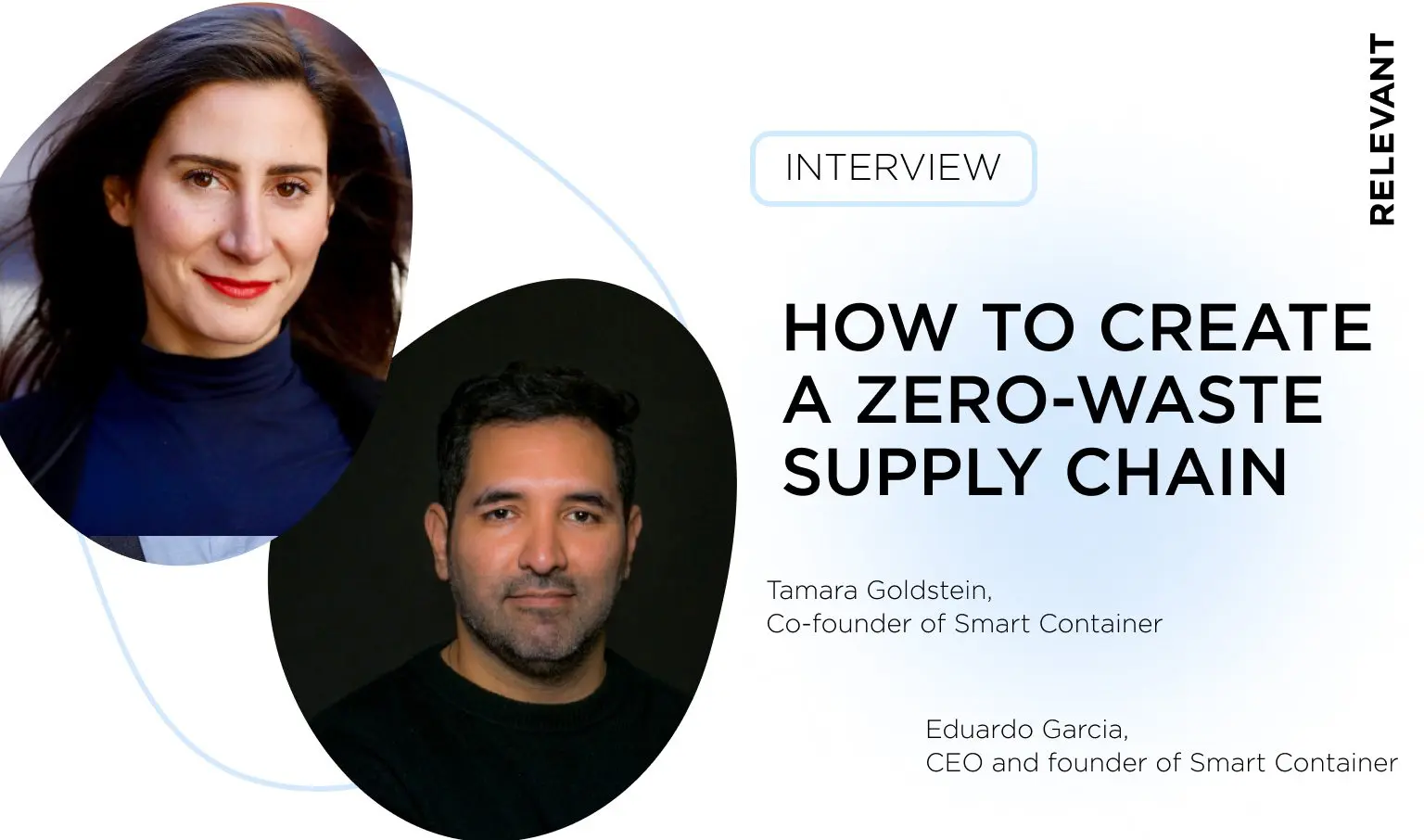
The Internet of Things has successfully entered our daily lives. Even non-tech-inclined people have started valuing the convenience, comfort, and valuable insights it offers. But according to McKinsey, the largest potential economic value from IoT — about 26 percent by 2030 — will account from the factory setting (including standardized production environments in manufacturing).
The Smart Container Company, founded in 2018, innovates the beverage supply chain with its first-to-market IoT device, KegTracker, and AI-driven software platform, BeverEDGE. It is one of the companies moving from pilot projects to successful value at scale. We at Relevant Founders had the chance to talk to the inspiring co-founders – Eduardo Garcia and Tamara Goldstein, about their lesser-told story in an innovative and prospective area of IoT.
The fateful meeting of two co-founders
One of startup founders’ earliest and most important decisions is whether to go alone or find a co-founder. Tamara and Eduardo knew each other from New York; they had many mutual friends. At some point, Eduardo left New York for Wales to start an IoT technology company. About a year later, he invited Tamara to work together.
What do you do at the Smart Container Company?
As an IoT startup, we are innovating the beverage supply chain. Our solution, KegTracker, is an Internet-of-Things (IoT) device that instantly turns kegs and casks into smart containers. We take the keg, the most sustainable packaging for delivering beer. It’s a circular economy asset. Using the latest 5G and sensor technology, we collect data from the kegs to create reports and insights that enable brewers, distributors, and pub operators to be more efficient and sustainable.
Why is IoT so useful right now?
The Internet of Things is a technology that allows devices like chairs, lamps, thermostats, and pipe sensors to create a global communication network by exchanging data through the Internet. Internet-enabled devices share data from sensors to an IoT gateway, where data is sent to be analyzed by the cloud or locally. People can interact with the devices by setting them up or accessing collected data, but the smart device will typically do all the work in the background.
Evolution to the original concept
How did the name of your company come about? Was it one of these things that took a long time?
“It was originally called FNW Insights – Food and Wine insights. But in the process, we evolved from the original concept to where we are today. The reason is that there are other use cases besides beer for which we can adapt the technology and different container types we’ll be able to do; we’ve already been approached by several industries, including health care and oil. So, we wanted to keep it somewhat generic.”
Why is now the right time for your company to exist?
“The Internet is now widely available, and the cost of batteries and electronics is declining every year,” says Eduardo. And I guess all these existing innovations allow us to do what we do. Objects are getting smarter. And the next thing we will do is connect objects with robots. So we are part of this whole Smart Cities movement.”
“People asked us why it didn’t happen before,” says Tamara. “We have overcome a lot of hurdles in our R&D and engineering work but couldn’t have done it several years back.”
For example, battery life prevented it from functioning for five to eight years, which is possible now. Besides, corporate breweries would not have digitized production or adopted new technologies a few years ago, so we would have received some rebuff.
But now, everyone wants to change their work to become more efficient and sustainable. And we’re going to be pioneers in this space; it’s interesting and gives us great opportunities. People don’t want to change until they see it helps. But they jump on the bandwagon once they see others doing it.
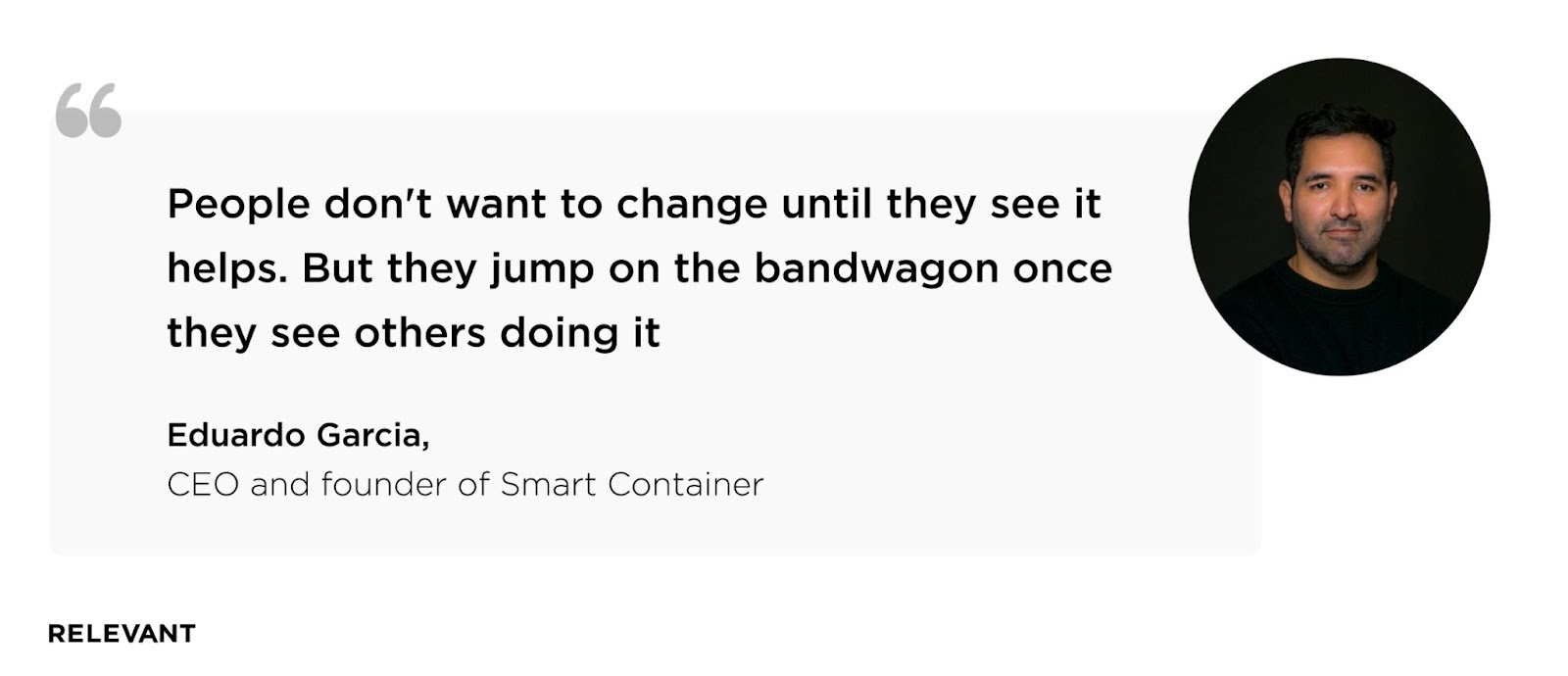
The Eureka moment from pre-existing ideas
In the same way that every idea is formed from other ideas, it also includes an element of surprise – a chance meeting of minds or a successful experiment. Let’s find out what this moment looked like for the founders of The Smart Container Company.
When did you have this Eureka idea, Tamara?
“There was no specific moment. Eduardo worked for the company for about nine months in R&D before I joined. For me, it was the moment when he explained the concept and the technology to me, and I realized that this was a problem we could solve.
Eduardo, what about you? Was there a moment?
We went through multiple prototypes and multiple ideas before we got to this. The Eureka moment was actually when we tried to make a scale to measure the liquid coming out of the kegs and connect it to Wi-Fi.
And suddenly, someone said, “Why don’t we try to make it smarter instead”? This random phrase changed our entire value proposition: from focusing on wastage at the pub to selling information to brewers so they could sell more products and package them in a more conscious and environmentally friendly way.
Zigzags of entrepreneurial life
A founder’s life leaves little time for pause. There’s always another hole to patch, another fundraising, another urgent priority. That compels founders to be masters in managing teams in a pressure-cooker environment.
Eduardo, how did you find the initial funding?
This is a credit to the accelerator, family, and friends. Many people volunteered and dedicated time to our project. There was a lot of sweat equity and free work in the first year and a half.
How do you deal with pressure, Tamara?
Our motto is confidence and complete tenacity because every day is different. You have to be able to grin, bear it, push through to the other side, and know that you’re working towards something that makes sense.
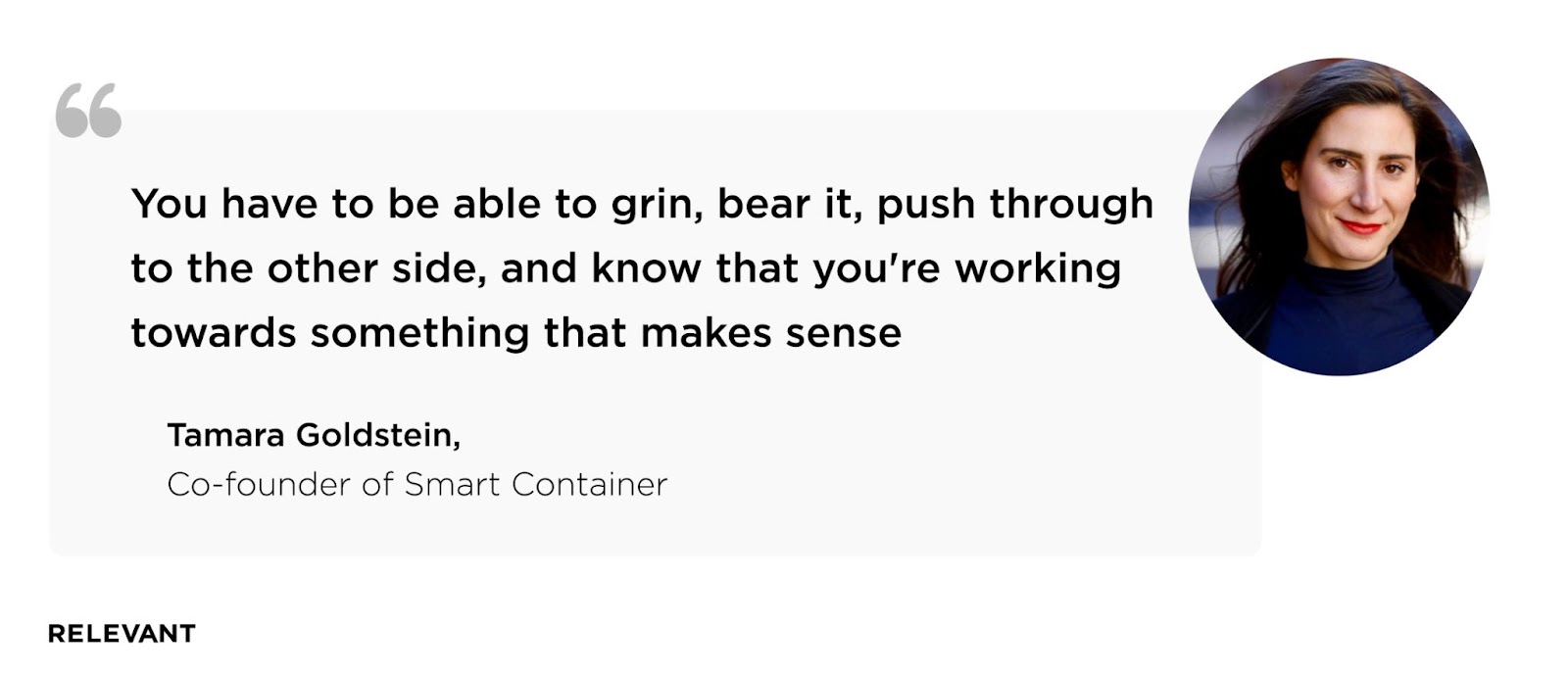
We joke about the zigzag of life – in the entrepreneurial world, all straight up and down in one day. Every time we have a down, it’s like, okay, we’ve been here before.
But what do you do when you have that zigzag, Eduardo?
Having a problem is coming up with the solution and then tracking against the resolution.
What is the difference between co-founders and company’s leaders, those who manage people? What challenges arise from this?
We have a small staff and don’t have the money that a larger company has, so we had to take the lead in training and talent development. We told everyone to dedicate 5% of their time each week to one of the pillars of this initiative. One deals with onboarding and hiring. The second is employee retention. The third takes care of staff training. And the last is what we call mobility. It’s an interesting challenge for people, says Tamara. Having this framework, we think, will help to create a better environment and a happier workplace.
A long road back to growth
How big is your team at the moment? Do you outsource development?
We have eight employees in-house and work with outsourced consultants, developers, and hardware vendors. Their number varies depending on how many resources we have. Next year, we will go into commercialization and mass production, and we will need to expand the team.
What’s been the biggest lesson you have learned so far that you didn’t know at the beginning?
First of all, we’re a sort of startup. We’re a very R&D-intensive company because of the space we’re in. Like we’re just putting our first product up on the market. But if I had known how long it would take, I would have probably not done it.
It’s been four or five years now, and the product still hasn’t been out. But that’s how long it takes to bring all these hardware robotics products to market. For hardware companies, it usually takes five-plus years to get everything from inception to fully working development. That’s called technology readiness.
Where is the future of the IoT? Where are we going?
First of all, things with high value and the supply chain become smart. As for the future of IoT, I think it will be miniaturization – the next generation of containers will be smaller.
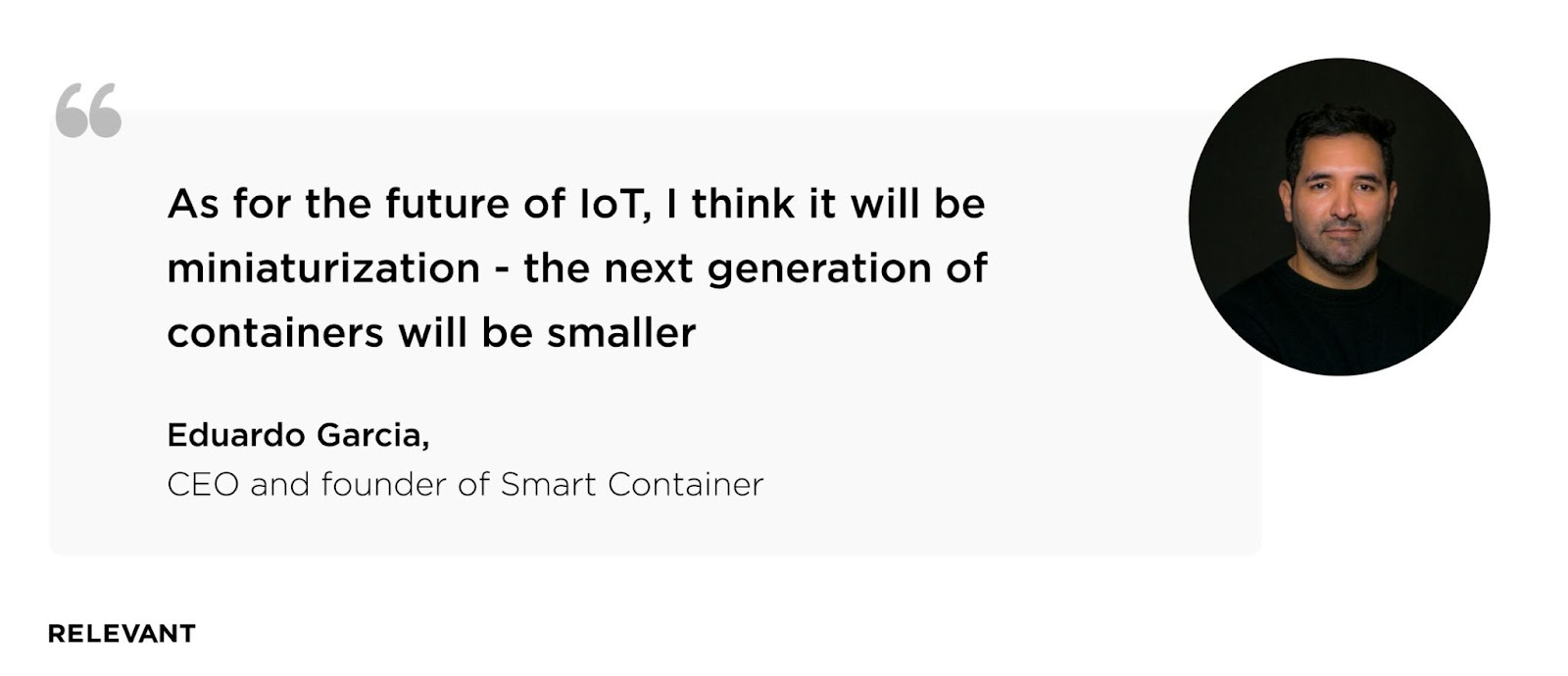
Co-founders’ bits of advice: be tenacious but put down a pillow
Finally, we asked Eduardo and Tamara for advice from other entrepreneurs and leadership teams about how to embark on their tech journey.
“My number one is tenacity,” says Tamara. “You have to believe in what you’re doing. And you’ve got to double down because your commitment will face many challenges and tests. Once you get past one or two and realize that you can, it’s very empowering.”
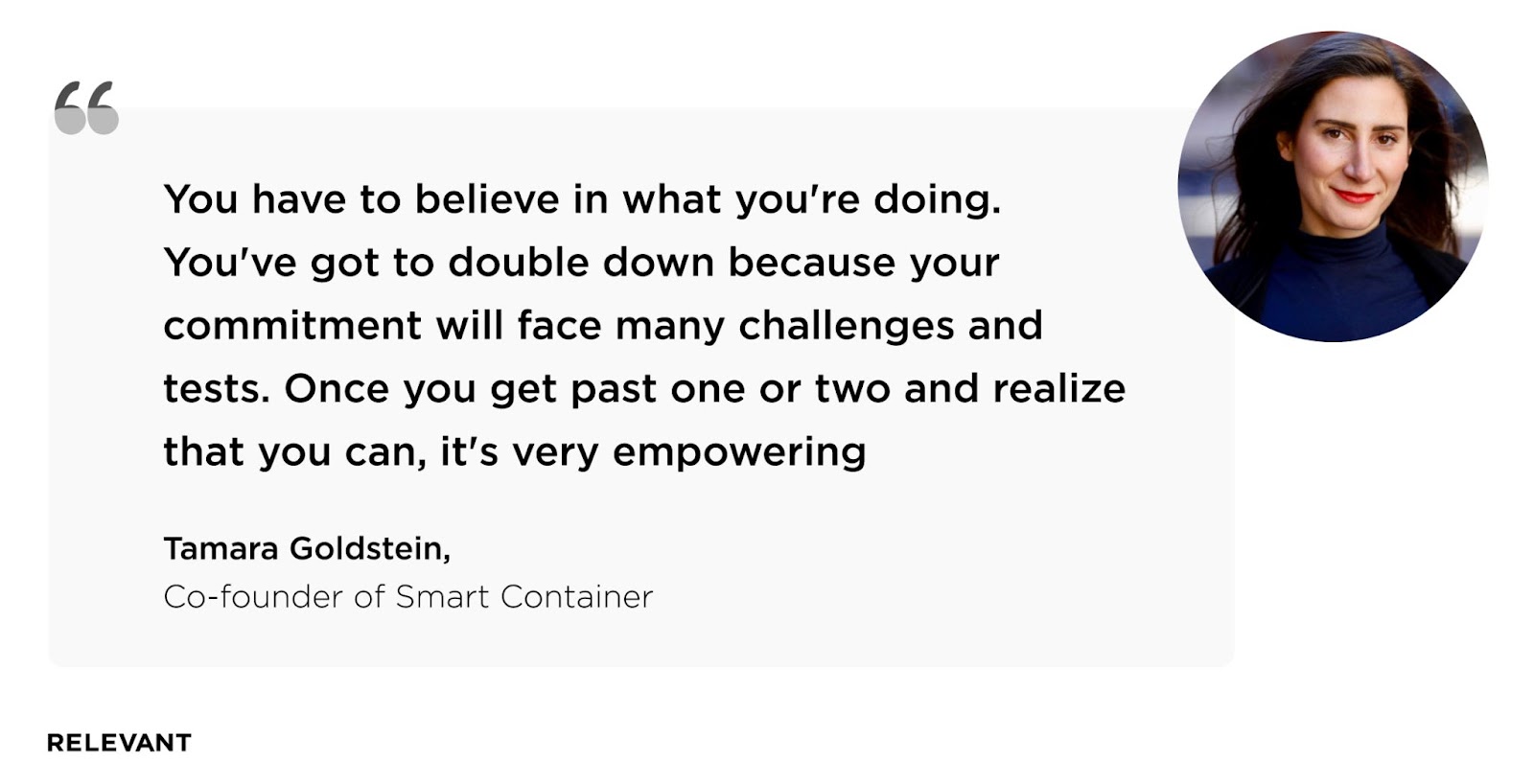
“If you’re just starting,” says Eduardo, “I’d recommend having lots of savings to sustain yourself at least for a year.”
